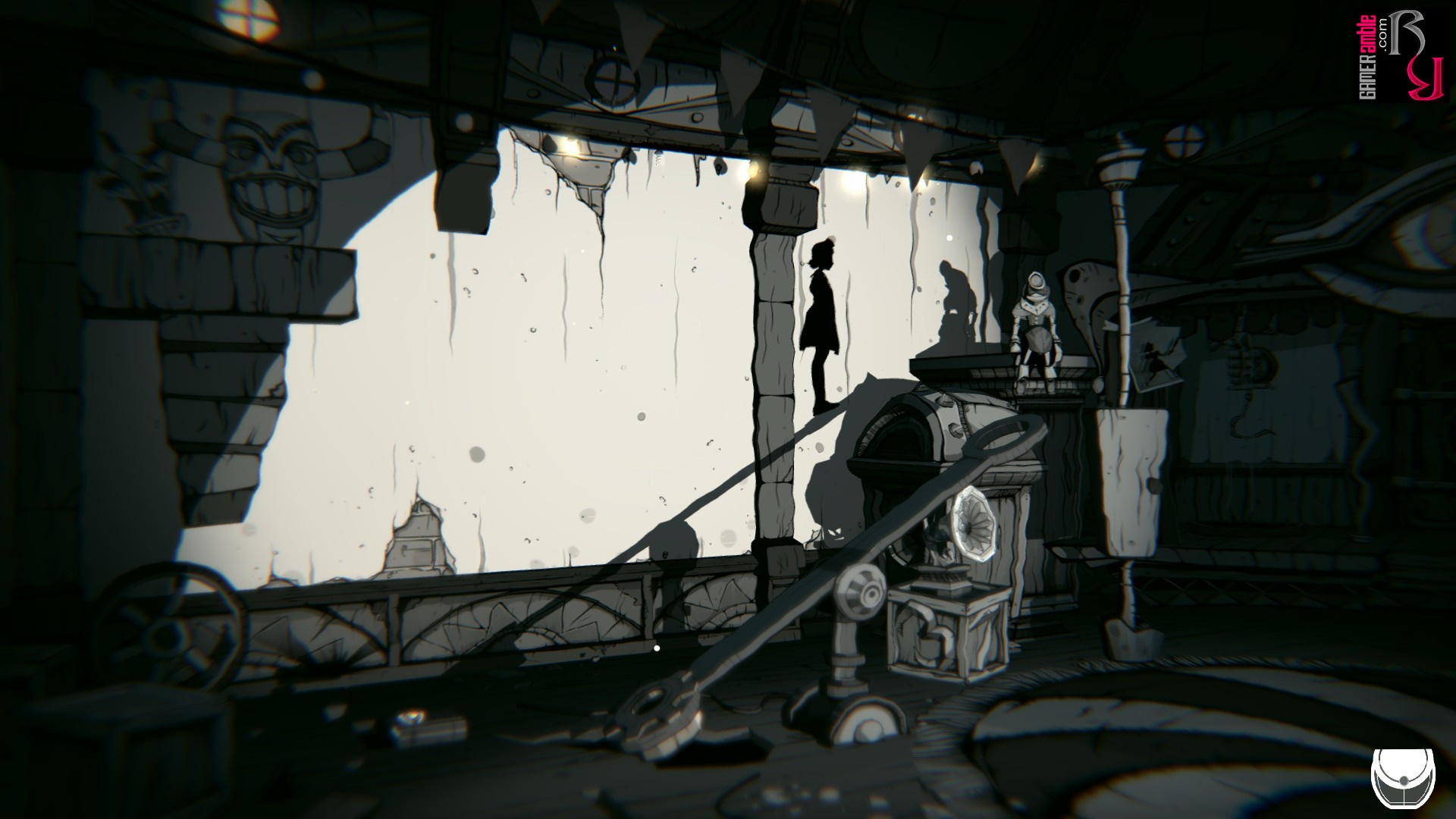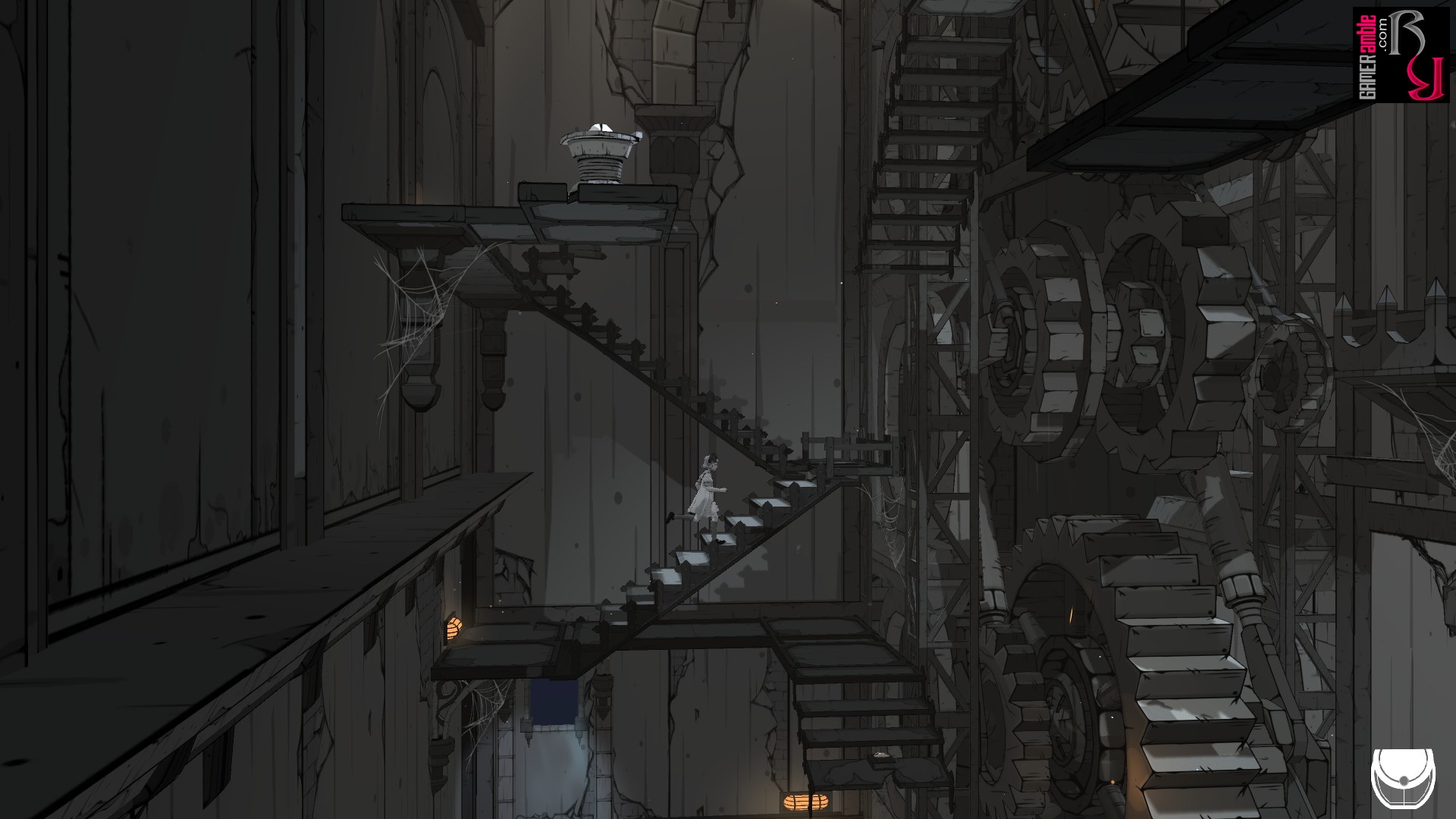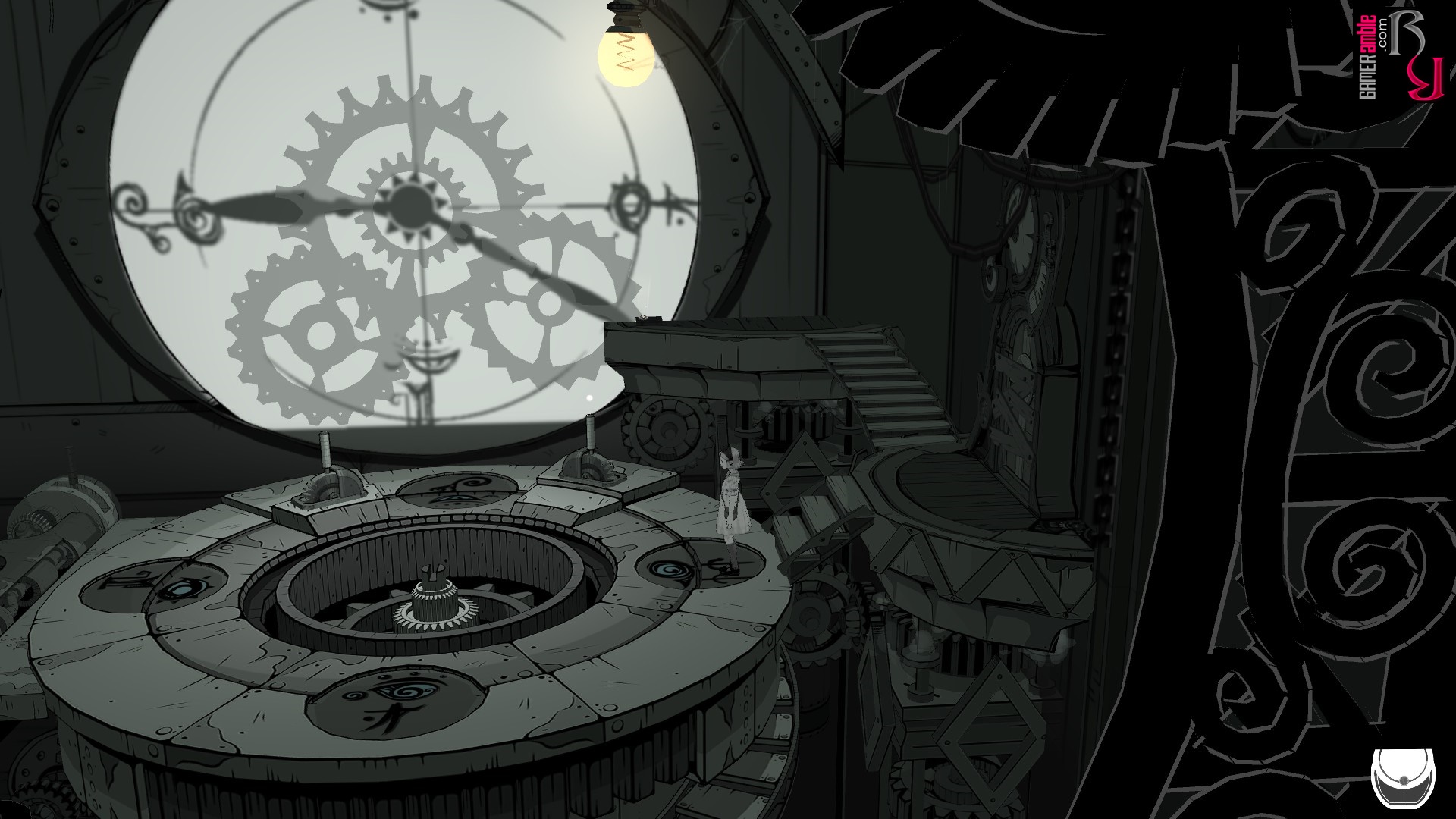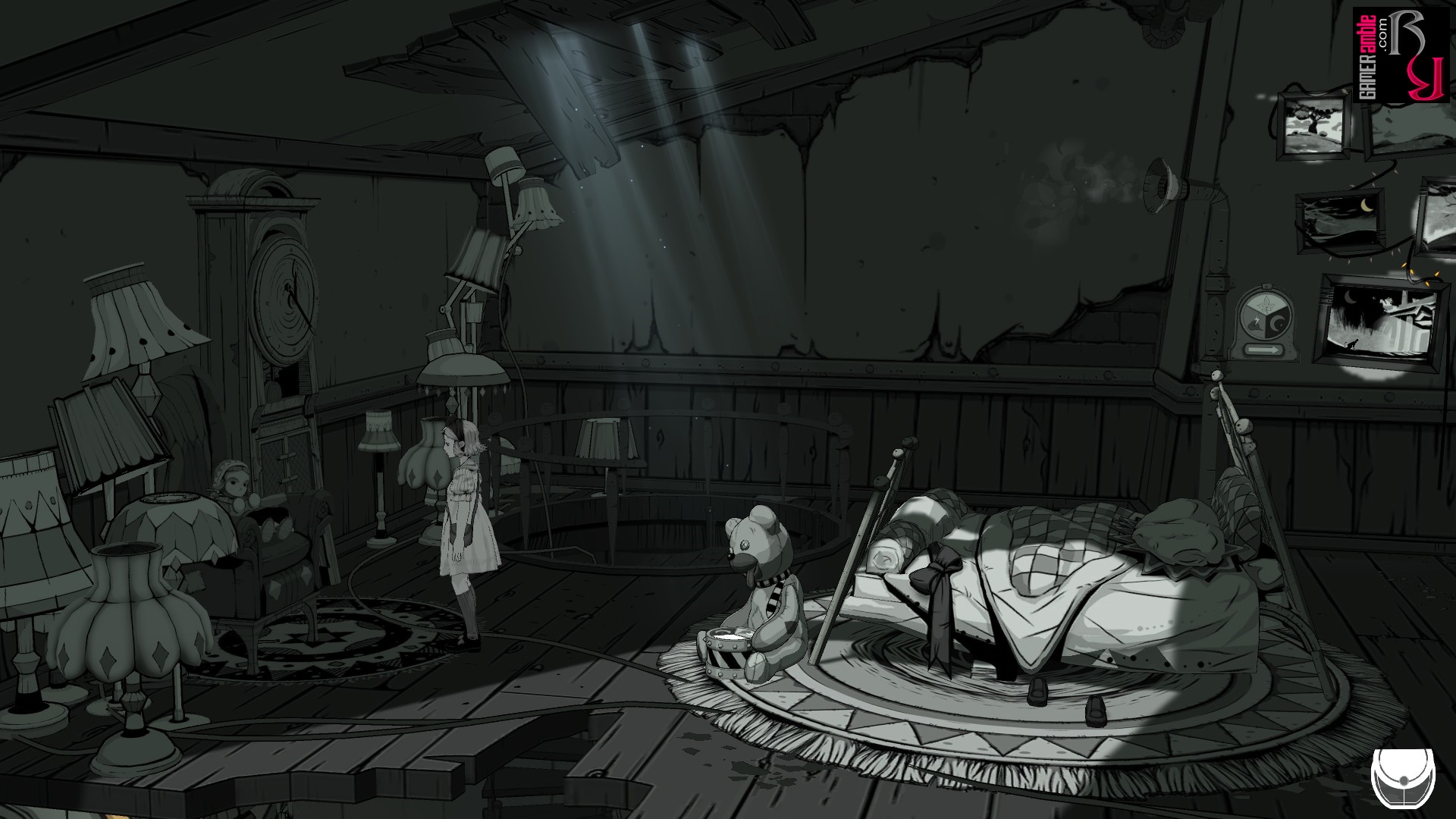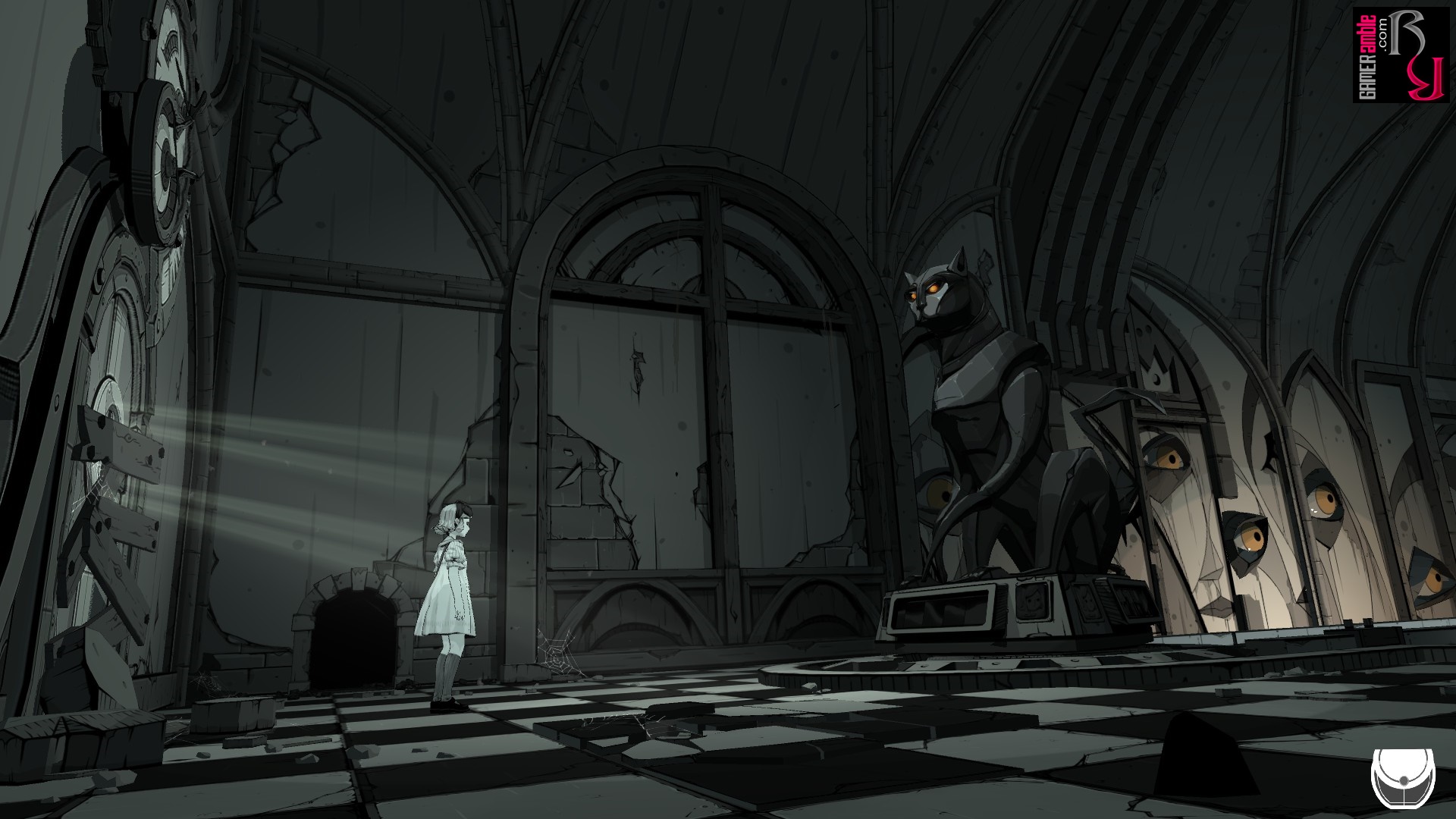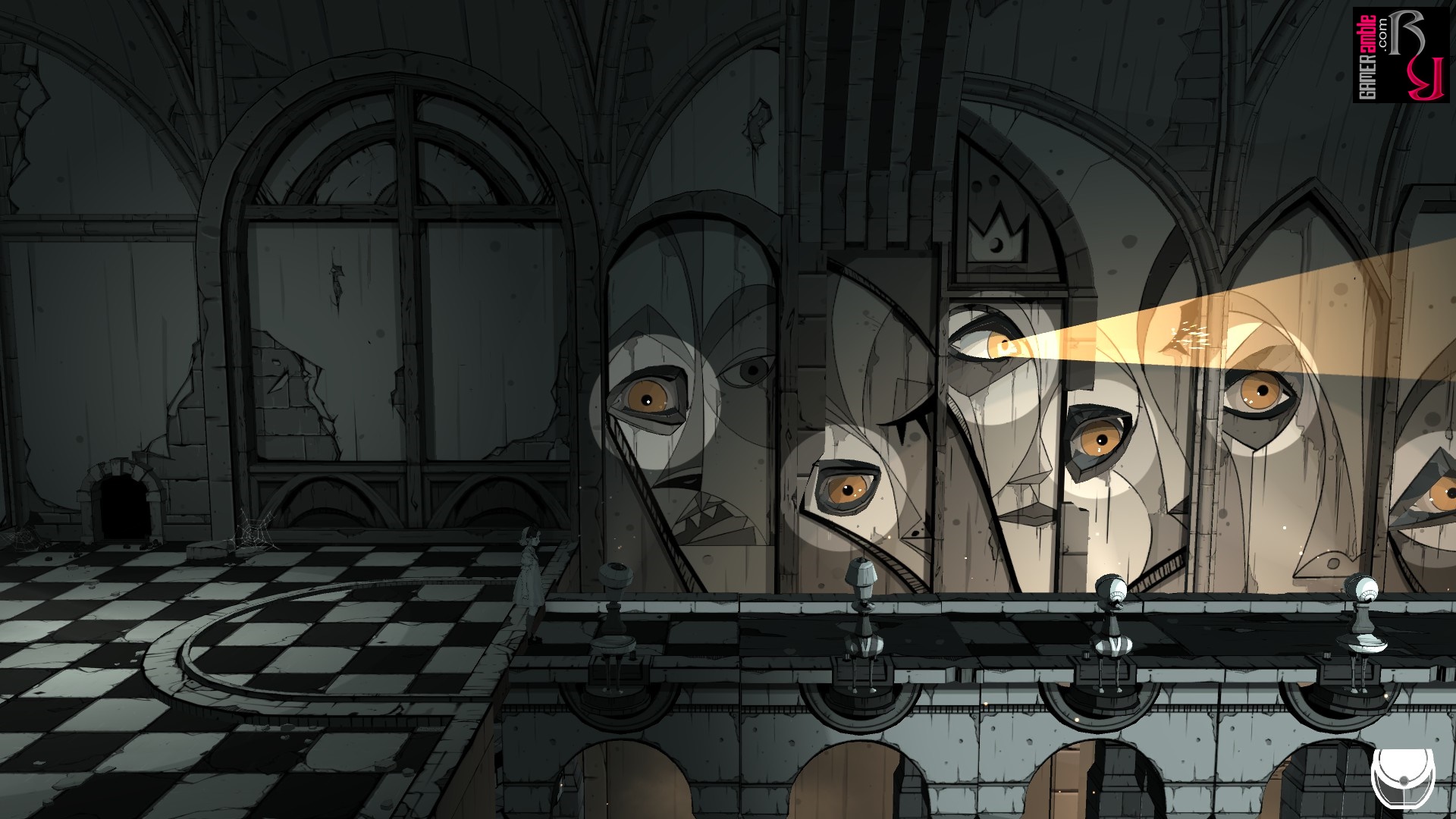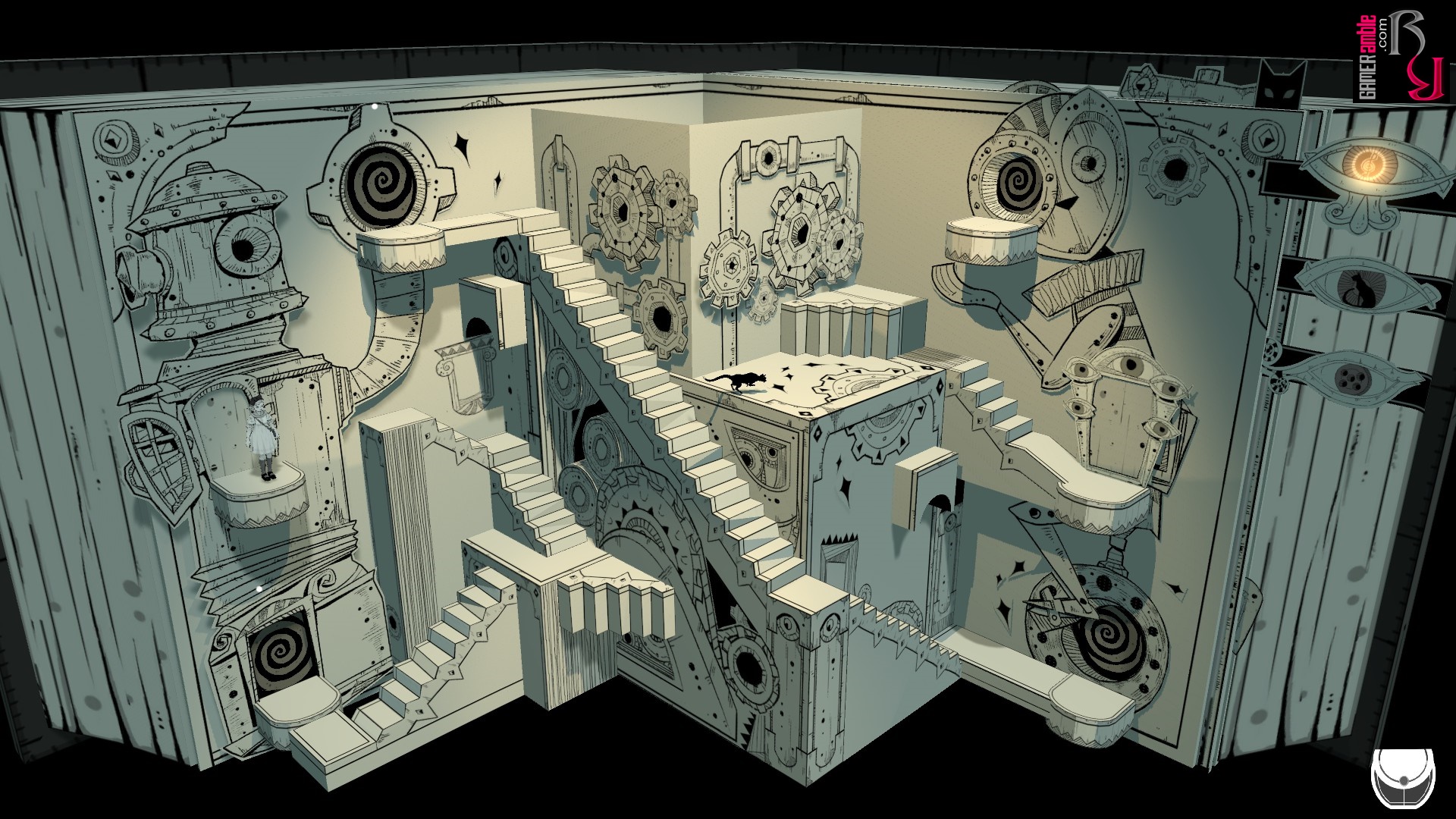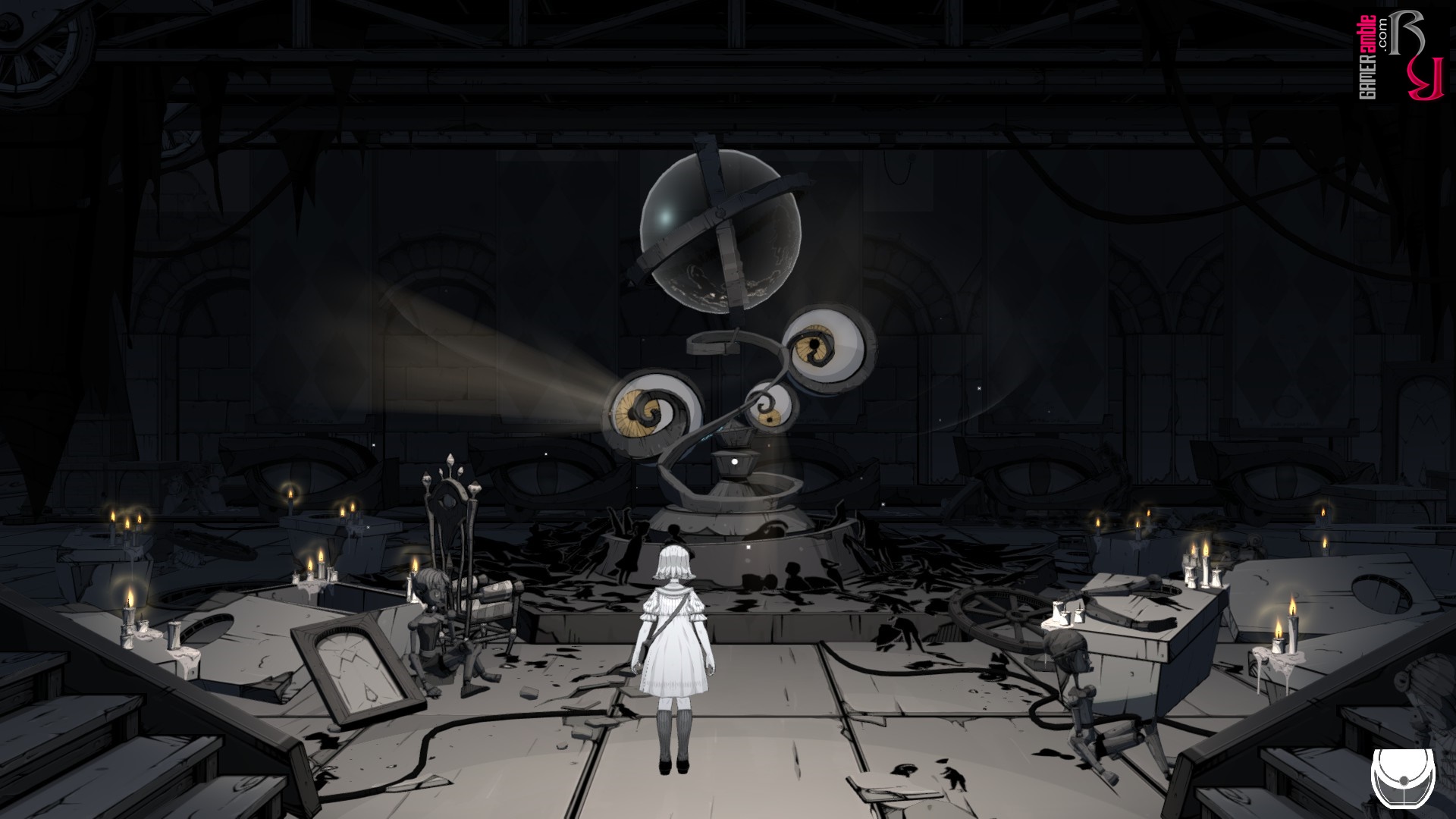Iris.Fall
Developer: NEXT Studios | Publisher: NEXT Studios | Release Date: 2018 | Genre: Casual / Adventure / Puzzle | Website: Official Website | Purchase: Steam
Like Alice ending up in Wonderland after following a white rabbit, the protagonist of Iris.Fall finds herself in a surreal dreamlike world while setting off in pursuit of a black cat. Since the game does not feature any voiceovers or indeed text of any kind it is up to readers to decipher why Iris thought that traipsing into a dilapidated theater in the dead of night is a good idea. Nevertheless, once Iris enters the theatre she finds all the color stripped from her world and must solve a series of puzzles to try and keep up with the cat that is leading her deeper into the shadowy world.
Puzzles form the heart of this adventure and Iris will frequently be confronted with them. Each chapter in the game is set in a large room where players must figure out how to get Iris to the exit. The game uses light and shadows as its theme, so many of the puzzles incorporate these. Some of the puzzles are quite clever and very satisfying to solve, but there are also a few that are a bit more obscure and require too much trial and error to complete for our tastes.
Iris.Fall is viewed from a third-person perspective and the game makes use of fixed camera angles to lend each scene a more dramatic look. In addition, the game makes use of monochrome-style cell-shaded visuals, which is a great match for the story and puzzles. Some puzzles require players to collect objects and use them in the right locations while others involve manipulating lights or shadows. Iris is able to use books that are placed in strategic spots to transition between the 3D world of light and the shadow world, which is 2D. However, since she can’t jump, the 2D sections often call for players to alter the environments in ways that change the shapes or positions of shadows. This can be a little tedious at times and some of these sections felt like they dragged out for too long, which is surprising considering how short the game is. With only eight chapters, puzzle veterans should be able to complete Iris.Fall in one or two sessions.
Although the visuals are monochromatic, each location in Iris.Fall is packed with detail and the environments are as interesting as they are diverse. One of our favorite sections features a giant pop-up book where players must switch between different pages to solve an M.C. Escher-style stairs puzzle. While some areas are a little creepy, especially the ones with marionettes, the game never feels like a horror title. Instead, there is an atmosphere of almost melancholy about the game, especially as the only other characters Iris encounters are marionettes.
To complement the visuals Iris.Fall features a rather sparse soundtrack. There are some occasional piano pieces, especially during the more dramatic moments, but overall players are left with only some ambient noises. These sound good and add to the dreamlike feel of the game. Iris.Fall can be played with a keyboard and mouse or controller with either working fine as there are no platforming timing-based actions required. Players can enable “Hints” which are actually just dots that are shown above objects in the environment that Iris can interact with. Since the environments are not that big it is usually obvious what players can interact with anyway, but this feature can be helpful to players who want to avoid wasting time on pixel hunting. Most of the puzzles feature a “Reset” button so players can start over if they get something wrong, but luckily it’s impossible to misuse items or do something so wrong that it requires a reload. We also didn’t encounter any bugs or issues during our playthrough of the game. The fact that the game has achievements for completing certain puzzles on the first attempt is a bit odd as players can simply restart from a previous checkpoint and try again if they fail to do so. The ability to select completed chapters from the title screen is also handy for getting some of the missed achievements, but other than that the game does not have a lot of replay value.
Overall, Iris.Fall is an interesting title, but it is neither the first to make use of lights and shadows as its core theme nor the best at doing so. Despite some clever puzzles, there’s nothing in the game that we haven’t really seen before and the ambiguity of the story also means the game is less memorable than it could have been. Couple that with the rather short playtime and Iris.Fall ends up as a game that most players will breeze through in a day or two and then never look back. There’s nothing wrong with this, but apart from the eye-catching visual style, there’s not much here to recommend to players who are not already fans of the genre.
System Requirements
- OS: Windows 7/8/10
- Processor: Intel Core i3-4160 CPU@3.6GHz or AMD FX-6100 CPU@3.3GHz
- Memory: 4 GB RAM
- Graphics: NVIDIA GTX 660 or AMD Radeon R9-270
- DirectX: Version 9.0c
- Storage: 4 GB available space
- Sound Card: 100% DirectX 9.0c compatible sound card
- OS: Windows 7/8/10
- Processor: Intel i5-4590 CPU@3.3GHz or AMD FX-8350@4GHz
- Memory: 8 GB RAM
- Graphics: NVIDIA GTX 960 or AMD Radeon R9-280
- DirectX: Version 11
- Storage: 4 GB available space
- Sound Card: 100% DirectX 9.0c compatible sound card


